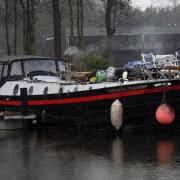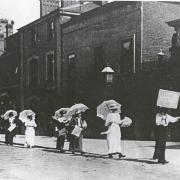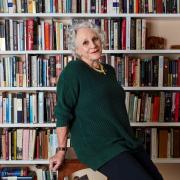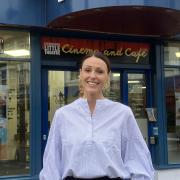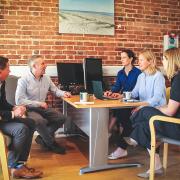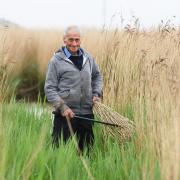Right at the edge of the complex of hangars, offices, terminals and runways that makes up Norwich airport sits a unique building. It is home to an organisation that you might, one day, be very glad exists.
The East Anglian Air Ambulance operates its medical emergency service 24 hours a day, seven days a week, 365 days a year. Its high-speed helicopter can be airborne in minutes, supported by a fleet of land vehicles, hurrying around East Anglia to the scene of incidents.
Helimed House is its new, state-of-the-art headquarters, a £7m investment which opened in the spring of 2021. It’s a complex building, part administrative, training and fund-raising hub, part active helicopter base.
Creating it was complex too, inevitably held up by the pandemic. Erin Davidson, a partner in Norwich-based architects Feilden and Mawson, led the fitting-out part of the project.
She had a lot to take into consideration; the frontline crews, the fundraising, administrative and support staff – and the public, some of who are visiting the EAAA as former patients after an incident which has almost certainly affected them deeply.
“For me that was my main focus; how do you want the public to feel coming in to this building? Because it can be overwhelming; it is a unique operation and if you are going in to that building you want to feel that you know where to go and that it is not daunting,” she says.
“You want them to feel warm going into the building because they are going in to talk about something that has changed the course of their lives.”
The crews are catered for with a set of hotel rooms, where visiting pilots can stay, plus some capsule-style sleeping pods, little soundproofed spaces for on-duty staff. They can be out of one of those and into a helicopter inside three minutes.
Another major consideration was using the space to bring the different teams involved together for the first time; previously they had been split across two sites. And while doing that, they had to be mindful that there still needed to be room for crews in particular to have their own privacy and their need to be alone sometimes.
That tricky integration has been particularly successful, says the EAAA chief executive, Matthew Jones.
“It’s the sense that we really feel like one team now, in a way that we never did before,” he says of the building. “I am terrifically pleased with it; it’s pretty much exactly done what we wanted it to do.”
Estates manager James Edwards agrees; ““I think everyone’s really proud of it. It seems to make everyone’s job easier and supports them and that’s a really big win.”
“For staff who have been at the charity a long time and have seen our previous properties and worked in them it’s certainly an upgrade.”
Upgrade it may be, but the EAAA had to take great care that the new HQ could not be seen as frivolous or garlanded with unnecessary fripperies. The building was largely paid for by a fund that the forward-thinking trustees set up, using 25% of legacies the EAAA received.
“It is wholly run as a charity, so everything we were looking at we had to question; ‘what is the purpose of this? How many people are going to use it?’ It was a very interesting process,” says Erin.
“Sometimes you have decoration for decoration’s sake but even there the posters are all part of the story.”
“We were conscious that we needed to demonstrate value for money and we didn’t want something with lots of shiny bells and whistles because clearly that would have given the impression of being profligate,” says Matthew.
“At the same time, we wanted something of high quality because we wanted to spend that money wisely and for this to be a building that stood the test of time and is hopefully adaptable enough for our needs in the future.”
That meant putting money into the right things, with an emphasis on durability, low maintenance, creating an operational but not unattractive space.
Sustainability was also a factor, both in the construction and the fitting-out of Helimed House. The hybrid fresh air movement system, which won an industry award, means that there is no need for air conditioning through the building and much of the furniture comes from a Dutch company which recycles plastic fished out of Amsterdam's canals.
There are plenty of plants and greenery to soften the rooms and birch and moss have been used to create a version of a green wall.
As in a home, the kitchen is the heart of the space, where everyone in the building can meet and which gives the opportunities for people working in the different branches of the charity to chat, find out how they are doing and improve how they work together.
Another, slightly unexpected, benefit has been in recruitment, says Matthew Jones, with the attractive working spaces being a real positive for would-be employees. “There is the motivation to work for an organisation that does what we do, but now there’s also a great environment to work within. People come in a go ‘wow, I could be working here.”
Erin certainly agrees: ““I say to them - I might just come and hot-desk at your office today – I just like it so much!”
Find out for yourself
The Hub at Helimed House is available for hire for businesses or organisations looking for some off-site activity. As well as being a smart place to be in, it has the added excitement factor of being on an active helicopter medical service base, which surely beats the local travel inn.
For more information and to find out more about the work of the EAAA visit eaaa.org.uk













